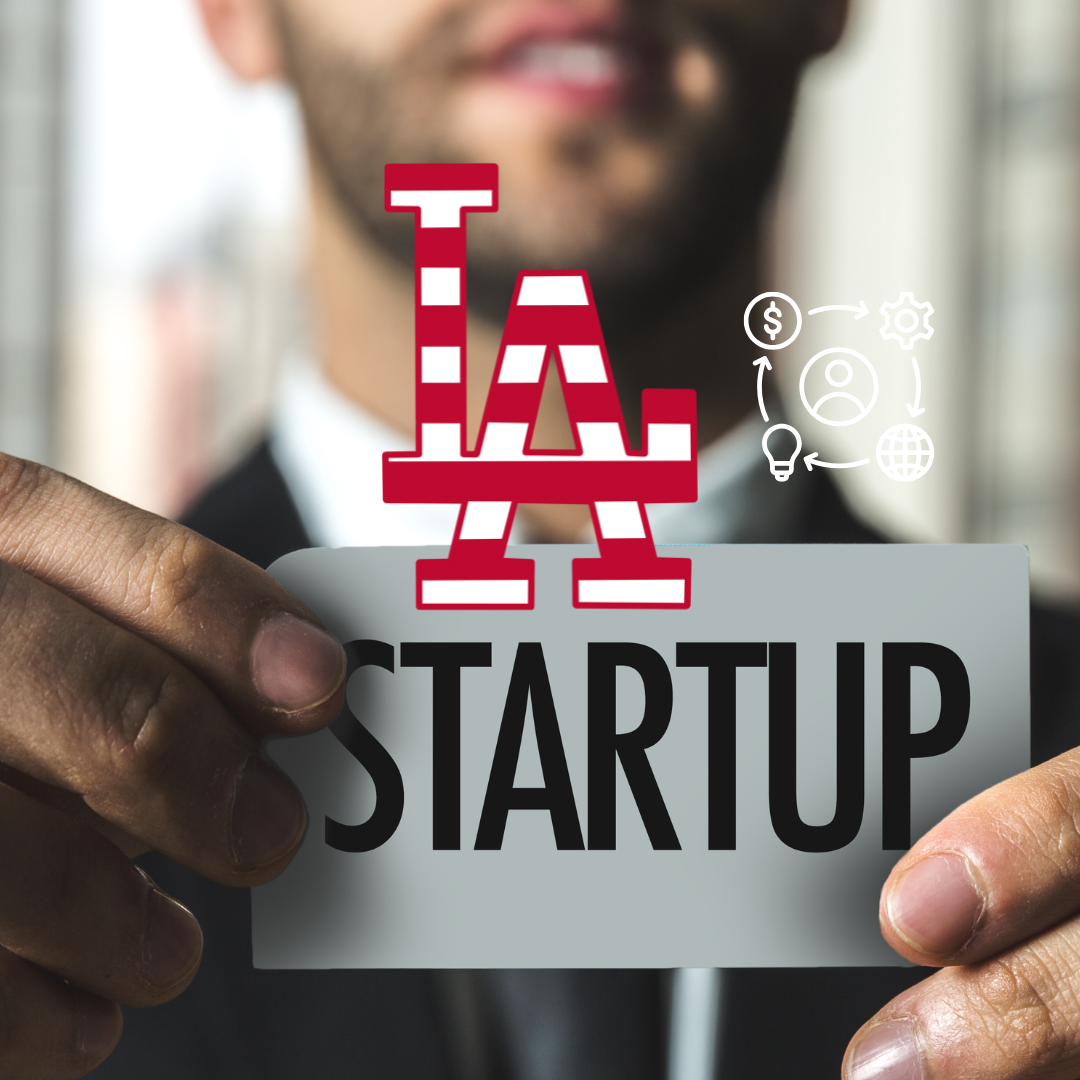“트럼프, 영화 100% 관세’ 초강수…한국 콘텐츠에 대한 영향은 '엔터테크 혁신이 돌파구 될 수 있을까('Trump, 100% tariffs on movies'...impact on Korean content could be a 'breakthrough through entertainment tech innovation')
도널드 트럼프 미국 대통령이 전 세계 영화 산업에 또 한 번의 ‘폭탄선언’을 던졌다. “해외에서 제작된 모든 영화에 100% 관세를 부과하겠다”는 그의 발표는, 단순한 구호가 아닌 글로벌 무역 분쟁과 문화 전쟁의 불씨가 될 전망이다. 이미 할리우드 대형 스튜디오들은 긴급대책 회의를 소집했고, 한국 콘텐츠 업계 또한 미국과의 합작·수출을 중심으로 성장해온 전략을 재점검해야 하는 상황이다.
실제 예로, 국내 제작사 A사는 미국 넷플릭스와 공동으로 준비하던 SF 영화의 일부 촬영을 캐나다에서 진행할 계획이었으나, 이번 ‘트럼프 관세 폭탄’ 소식이 전해지자 “미국 극장 개봉 시 발생할 수 있는 100% 관세 부담을 누가 질 것인지”를 놓고 협상 테이블에서 난항을 겪는 것으로 알려졌다.
업계 관계자들은 “만약 관세 정책이 현실화된다면, 한국 영화·드라마가 미국에 진출하거나 투자받는 방식 전반에 근본적인 변동이 불가피해진다”고 입을 모은다.
최근 미국의 영화·미디어 관세 강화 움직임에도 불구하고, 엔터테인먼트 테크(버추얼 프로덕션, AI 편집, 더빙, 클라우드 등) 확산으로 인해 물리적인 콘텐츠 제작 현장의 중요성이 점차 줄어들고 있어 관세의 직접적 영향은 제한적이라는 분석이 많다.
그러나 한국은 장기적으로 관세 리스크를 줄이기 위해 버추얼 프로덕션, AI 기반 자동 편집, 더빙, 클라우드 등 첨단 엔터테크 산업을 적극적으로 육성해야 한다는 목소리가 커지고 있다.
동시에, 미국의 관세 리스크를 우려하는 글로벌 TV·영화 제작사들을 한국에 유치할 수 있도록, 'TV·영화 산업에서의 엔터테크 허브' 전략이 필요하다는 지적이 나온다. 서울 등은 이미 AI, XR, 메타버스 등 엔터테크 생태계가 빠르게 성장하고 있으며, 정부와 민간의 지원이 활발하다.
"위기는 새로운 영웅을 만든다: 한국이 글로벌 엔터테크 허브가 될 수 있는 절호의 기회"
"A crisis gives rise to new heroes: A golden opportunity for Korea to become a global entertainment tech hub"
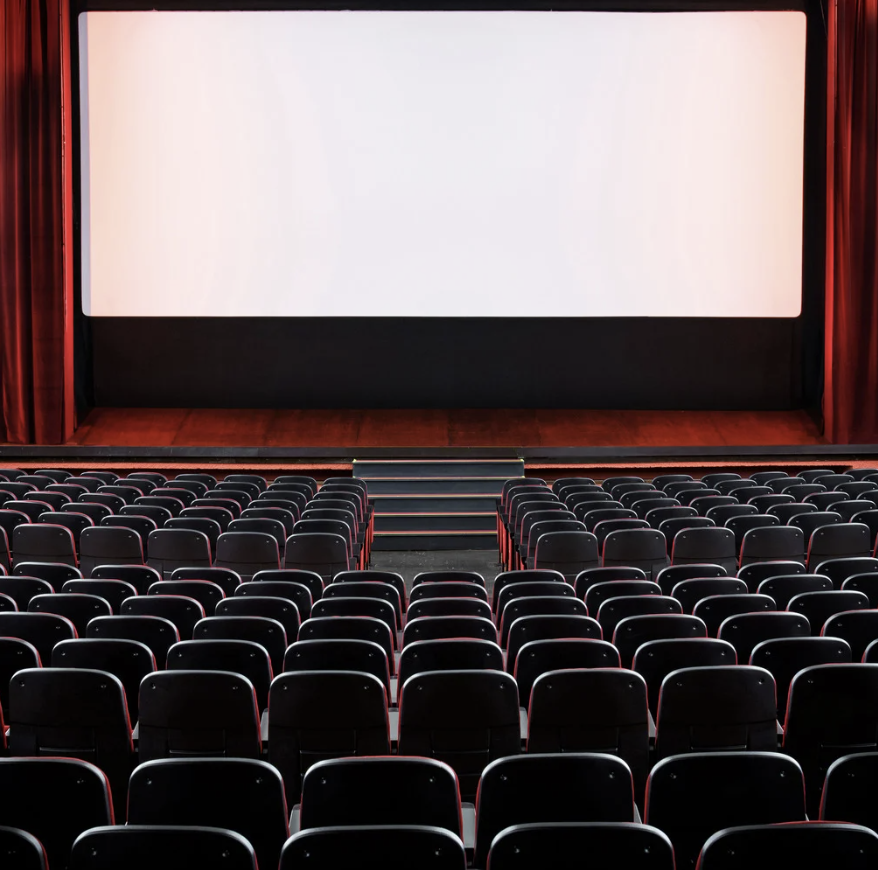
Trump’s ‘100% Tariff on Foreign-Made Films’: Could Entertainment Tech Be the Industry’s Lifeline?
President Donald Trump has once again rattled the global film sector with a startling announcement: “We will impose a 100% tariff on any film produced outside the United States.”
Far from mere rhetoric, the plan — shared on Truth Social on May 4 — has already triggered emergency strategy meetings at major Hollywood studios. It also sends tremors across international markets, including South Korea, whose film and TV industries have increasingly relied on co-productions and distribution deals with U.S.-based partners.
Despite the recent move by the US to strengthen tariffs on foreign films and media, many analysts point out that the direct impact of tariffs is limited due to the growing prevalence of entertainment tech (such as virtual production, AI editing, dubbing, cloud solutions), which is reducing the importance of physical production sites.
However, there is an increasing call in Korea to proactively foster advanced entertainment tech industries-like virtual production, AI-based automated editing, dubbing, and cloud infrastructure-to mitigate long-term tariff risks.
At the same time, experts stress the need for a strategy to attract global TV and film studios-concerned about US tariff risks-to Korea by positioning the country as an "entertainment tech hub" for the TV and film industry. Cities like Seoul are already seeing rapid growth in the entertainment tech ecosystem, including AI, XR, and metaverse, with strong government and private sector support.
The entertainment tech industry is shifting from traditional hardware and physical production to an intangible, digital, AI- and cloud-driven service model, making it less sensitive to tariff barriers
A Shock to Hollywood’s System
Trump’s justification for the measure is twofold: national security and what he calls “messaging and propaganda.” He contends that foreign governments entice American studios and talent with generous tax incentives, draining the U.S. film industry of its resources and endangering American jobs. Already, he has appointed Mel Gibson, Sylvester Stallone, and Jon Voight as “special ambassadors” tasked with bringing high-profile productions back to domestic soil.
Yet, key questions remain:
Authority: Does the U.S. president possess unilateral power to levy tariffs on intangible goods like films, which often move as digital files rather than physical imports?
Scope: How would “foreign-made” be defined? Many large-scale movies and streaming projects follow hybrid production models: script development and postproduction in the U.S., primary filming abroad.
Retroactivity: Would blockbusters now in mid-production or recently completed be subject to hefty backdated tariffs?
These uncertainties leave Hollywood in a state of confusion. A number of ongoing franchises — for instance, Mission: Impossible – The Final Reckoning and Jurassic World Rebirth — have already completed substantial overseas shoots, courting the risk of colossal tariffs if Trump’s proposal solidifies.
■ “미국 영화산업 죽어가고 있다”…트럼프, 전격 관세 선언
지난 5월 4일(현지시각) 도널드 트럼프 미국 대통령이 소셜미디어 플랫폼 ‘트루스소셜(Truth Social)’을 통해 “해외에서 제작된 모든 영화에 대해 100% 관세를 부과하겠다”고 선언했다. 트럼프 대통령은 “여타 국가들이 세제 혜택 등 각종 인센티브로 미국 제작사와 인력을 빼앗고 있다”며, 이를 **“국가안보에 대한 위협이자 메시지·프로파간다 문제”라고 규정했다.
트럼프 대통령은 구체적으로 “미국 영화산업이 빠른 속도로 죽어가고 있다”고 강조하며, 새로운 관세 부과를 통해 “다시 미국에서 영화를 만들게 될 것”이라고 말했다. 그는 이미 지난 1월 배우 멜 깁슨, 실베스터 스탤론, 존 보이트를 “‘미국 영화산업 특별 대사’로 임명”해 해외 로케이션 및 공동제작 문제를 해결하겠다고 공언한 바 있으나, 이번 발표 후에도 이들 대사의 활동 내용은 아직 알려지지 않았다.
할리우드 주요 스튜디오들은 급히 대책회의를 소집한 것으로 전해졌다. 그러나 대통령에게 관세를 결정할 권한이 있는지, 관세를 어떤 방식으로 부과할지, 이미 촬영이 끝났거나 제작 중인 영화들에도 소급 적용되는지 등 여러 실무·법적 변수가 산적해 있다.
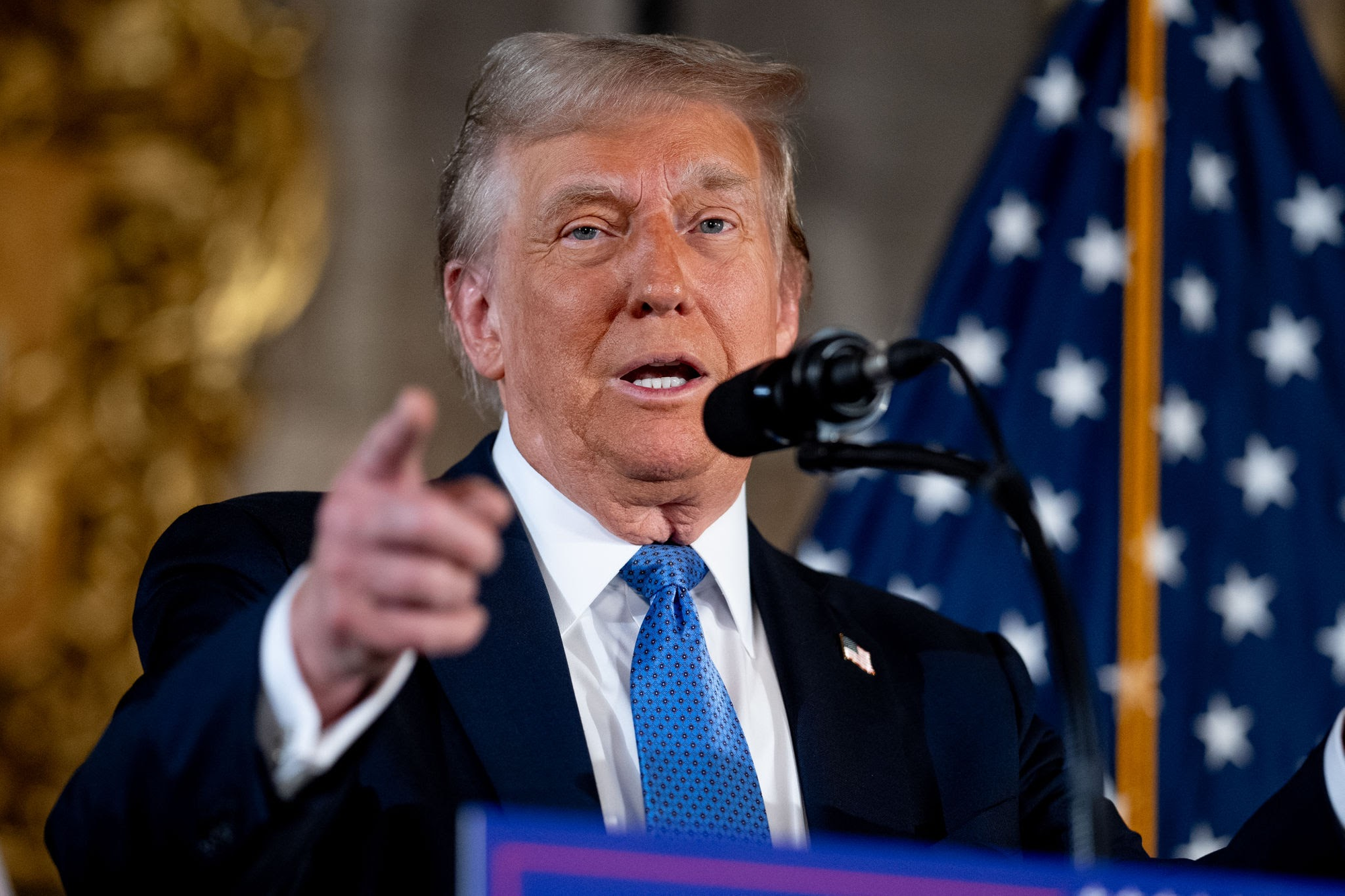
An Industry Still in Recovery
Contrary to Trump’s claim that “American moviemaking is on its last legs,” there are signs of a modest rebound in North American ticket sales. The 2025 box office is reportedly up 15.8% from last year, although it remains below pre-pandemic heights. Moreover, the wave of 2023–2024 production slowdowns — exacerbated by union strikes and studio budget cuts — has yielded fewer projects and diminished momentum.
Even so, a handful of films have posted encouraging numbers: Disney’s Marvel Cinematic Universe release, Thunderbolts, debuted with a robust $76 million in its opening weekend domestically and over $162 million globally. Other hits like A Minecraft Movie and Sinners have likewise helped narrow the gap with 2019 box-office figures.
Yet, leading studios warn that if a 100% tariff becomes reality, they may scale back both overseas location shoots and new domestic productions, fearing soaring costs and retaliatory levies from other nations.
■ “디지털 파일에 관세를 어떻게?”…실현 가능성에 의문도
업계 전문가는 이번 조치의 실효성에 대해 회의적 시각을 드러낸다. 통상 관세는 물리적 상품이 항만·세관을 통과할 때 부과하지만, 영화는 스트리밍·극장 배급·TV 판권 판매 등 경로가 매우 다양하다.
더욱이 최근 해외 로케이션은 ‘하이브리드’ 형태로 진행되어, 실제 스크립트 개발·후반작업은 미국에서 하고 촬영만 해외에서 이루어지는 경우가 많다. 이럴 경우 과연 어떤 부분부터 ‘해외 제작’으로 간주해 관세를 매길지 기준이 모호하다는 지적이다.
만일 관세가 현실화된다면, 상호 보복 관세 역시 불가피해 보인다. 영화산업은 이미 해외 흥행이 중요한 수익원인데, 미국 영화에 대한 역(逆)관세가 매겨지면 할리우드 스튜디오들도 치명적 타격을 입을 수 있다. 미국영화협회(MPA) 자료에 따르면, 미국 영화산업은 2023년 기준 무역흑자가 약 153억 달러에 달한다.
Tariff Feasibility Under Scrutiny
Observers question whether and how a tariff would be practically enforced on digital media. Traditionally, customs duties apply to tangible goods crossing borders, but feature films and TV shows can enter the U.S. market through a multitude of non-physical channels: streaming services, licensing agreements, and theatrical releases.
Moreover, the global film economy thrives on cross-border cooperation. For example, major productions often split filming among Canada, the U.K., and various U.S. locations, while VFX and postproduction might be handled in Asia. With such a distributed workflow, deciding when a project shifts from “domestic” to “foreign” becomes tricky at best. Industry economists also highlight the potential for counter-tariffs from crucial markets like Europe and Asia, which could dent the massive overseas revenues Hollywood relies upon.
■ 할리우드 ‘해외 로케’ 직격탄…촬영 마친 블록버스터도 긴장
이번 발표로 인해 가장 큰 혼란이 예상되는 분야는 대규모 해외 로케이션 촬영이 필수적인 블록버스터들이다.
예컨대 ‘미션 임파서블: 더 파이널 레코닝’, ‘주라기 월드 리버스’ 등은 이미 영국·캐나다 등지에서 상당 부분 촬영을 진행했다.
영국 런던은 풍부한 스튜디오 인프라, 영어권 인력, 세액 공제 등 탁월한 혜택으로 할리우드 대작이 몰리는 대표 거점으로 자리 잡았으나, 이번 조치가 현실화될 경우 미국 상영 시 막대한 관세를 부담해야 할 우려가 커지고 있다.
트럼프 대통령의 주장과 달리, 북미 박스오피스는 올해(2025년) 들어 지난해 대비 15.8% 성장하며 점진적 반등세를 보이고 있다. 다만, 2023년 배우·작가 파업 이후 제작 건수가 급감했고, 미디어 그룹들의 비용 절감 정책이 맞물려 여전히 팬데믹 이전 수준에 미치지 못한다.
할리우드 한 스튜디오 관계자는 언론 인터뷰에서 “여기에 100% 관세 부담까지 겹치면 해외 로케이션 투자는 물론, 미국 내 신규 제작에도 차질이 불가피하다”고 토로했다.
■ 박스오피스 “서서히 반등 중”…흥행 작품도 등장
미국 극장 매출은 아직 팬데믹 이전(2019년)의 호황을 완전히 회복하진 못했다. 전문가들은 20232025년 극장 매출이 당시의 60~70% 수준에 머물 것으로 보고 있다. 스트리밍 서비스 확장, 관객 관람 패턴 변화, 콘텐츠 공급 감소 등의 복합적 영향이다.
그럼에도 최근 몇 편의 작품이 흥행 낭보를 전하고 있다. 디즈니의 마블 시네마틱 유니버스(MCU) 신작 ‘썬더볼츠(Thunderbolts)’는 5월 4일 북미 박스오피스 1위(오프닝 주말 7,600만 달러)로 데뷔하며 글로벌 1억6,200만 달러를 벌어들였다. 전 세계에서 8,600만 달러, 북미에서 7,600만 달러를 각각 기록해 디즈니 자체 전망치에는 부합했다.
올해(2025년) 북미 박스오피스는 지난해 대비 15.8% 성장하며 서서히 반등 중이다. ‘마인크래프트 무비(A Minecraft Movie)’, ‘시너스(Sinners)’ 등 흥행작이 이어지면서 2019년(코로나19 사태 이전)과의 격차도 점차 좁히고 있다.
다만, 2023년 배우·작가 파업 이후 제작이 급감했고, 주요 미디어 그룹들의 비용 절감 정책이 겹치면서 film·TV 프로덕션 건수는 팬데믹 이전에 비해 40% 이상 줄어든 상황이다. 할리우드 대형 스튜디오들은 “추가적인 관세 부담이 가해지면 새로운 제작 투자가 더욱 위축될 수 있다”고 경고한다.
Domestic Theatrical Gross in Q1, 2015–25
2015–2025년 1분기 미국 극장 매출 (단위: 10억 달러), 출처 각사
| 연도 (Year) | 매출 (Gross, $B) |
|---|---|
| 2015 | 약 2.5 |
| 2016 | 약 2.8 |
| 2017 | 약 2.95 |
| 2018 | 약 2.85 |
| 2019 | 약 2.5 |
| 2020 | 약 1.8 |
| 2021 | 약 0.3 |
| 2022 | 약 1.3 |
| 2023 | 약 1.75 |
| 2024 | 약 1.6 |
| 2025 | 약 1.4 |
미국 극장 산업도 팬데믹 이전의 호황을 아직 완전히 회복하지 못하고 있다.
버라이어티 분석에 따르면 2023~2025년에는 회복세가 주춤하며, 극장 매출이 팬데믹 이전의 60~70% 수준에 머무르고 있다. 이는 스트리밍 서비스의 성장, 관객 관람 패턴 변화, 콘텐츠 공급 감소 등이 복합적으로 영향을 미친 결과로 해석할 수 있다.
- “북미 오프닝”은 미국 내 첫 주말 박스오피스 수익입니다.
- “전세계 수익”은 2025년 4월 23일 기준 누적 수익입니다.
- “제작비”는 공식 발표된 제작 예산입니다.
This table presents the top theatrical openings of 2025, showing Korean and English titles, domestic opening grosses, global grosses, and production budgets1.ShareExportRewrite
Related
2025년 최고의 극장 개봉작(Top Theatrical Openings of 2025)
| 순위 | 영화 제목 (한글) | Movie Title (English) | 북미 오프닝 (Domestic Opening) | 전세계 수익 (Global Gross) | 제작비 (Budget) |
|---|---|---|---|---|---|
| 1 | 마인크래프트 영화 | A Minecraft Movie | $162.8M | $727M | $150M |
| 2 | 캡틴 아메리카: 브레이브 뉴 월드 | Captain America: Brave New World | $88.8M | $414.8M | $180M |
| 3 | 시너스 | Sinners | $48M | $79.9M | $90M |
| 4 | 백설공주 | Snow White | $42.2M | $194.6M | $270M |
| 5 | 도그맨 | Dog Man | $36M | $140.5M | $40M |
| 6 | 더 킹 오브 킹스 | The King of Kings | $19.4M | $52.6M | - |
| 7 | 미키 17 | Mickey 17 | $19M | $131.8M | $118M |
| 8 | 어 워킹 맨 | A Working Man | $15.5M | $87.2M | $40M |
| 9 | 덴 오브 시브스 2: 판테라 | Den of Thieves 2: Pantera | $15M | $57.3M | $40M |
| 10 | 디 아마추어 | The Amateur | $14.8M | $65.7M | $60M |
- 10편의 북미 개봉 첫 주말 매출 합계: 4억 6,150만 달러
- 글로벌 누적 매출 합계: 19억 5,140만 달러
- 총 제작비 합계: 9억 8,800만 달러
- 북미 오프닝, 글로벌 흥행, 제작비 모두 ‘A Minecraft Movie’가 1위
- 제작비는 ‘Snow White’가 2억 7,000만 달러로 가장 높음
■ 할리우드 되찾겠다 외치며 ‘특별 대사’까지 임명…실효성은?
트럼프 대통령은 이미 올해 초, 배우 멜 깁슨, 실베스터 스탤론, 존 보이트 등을 “미국 영화산업 특별 대사”로 지명하면서 “해외로 나간 미국 제작 역량을 국내로 되돌리겠다”고 선언했다.
그러나 이들 대사가 구체적인 대책을 제시한 적은 없고, 트럼프 대통령 역시 영화만을 콕 짚어 관세를 매기겠다고 밝혔을 뿐 TV·스트리밍 시리즈에 대해서는 언급조차 없는 상황이다.
업계 일각에서는 “할리우드 블록버스터 외에도 해외에서 제작되는 시리즈나 애니메이션이 많은데, 관세 부과가 실제로 얼마나 광범위하게 적용될지 불투명하다”는 지적이 나온다.
해외 로케이션 중 상당 부분은 드라마·시리즈 등 장르 프로덕션이라는 점에서 “실질적 효과보다는 정치적 퍼포먼스”라는 지적도 나온다.
- 역관세·보복 위험:
미국이 관세를 실제로 부과할 경우, 유럽·캐나다·아시아 등 주요 시장의 보복 관세, 무역 마찰이 뒤따를 수 있다. 이미 중국은 미국산 영화 수입을 축소하며, 헐리우드의 중국 내 박스오피스 점유율이 5%까지 하락한 상황이다. - 글로벌 시장 구조 변화:
아시아, 중동, 남미 등 신흥 시장에서는 로컬 영화 점유율이 50~80%까지 치솟고 있다. 헐리우드의 글로벌 점유율은 이미 60%대에서 51%까지 하락했으며, 관세가 본격화되면 이 추세가 더 빨라질 수 있다. - 디지털 유통 확산:
스트리밍 등 디지털 플랫폼이 확대되면서, 관세 등 물리적 무역장벽의 영향력이 약화되고 있습니다. 글로벌 스트리밍 서비스는 이미 현지화 전략, 직접 배급 등으로 기존 유통망을 우회하고 있다
■ 24년 글로벌 영화·TV 제작 인센 역대 최다…미국·유럽, 경쟁 ‘후끈’
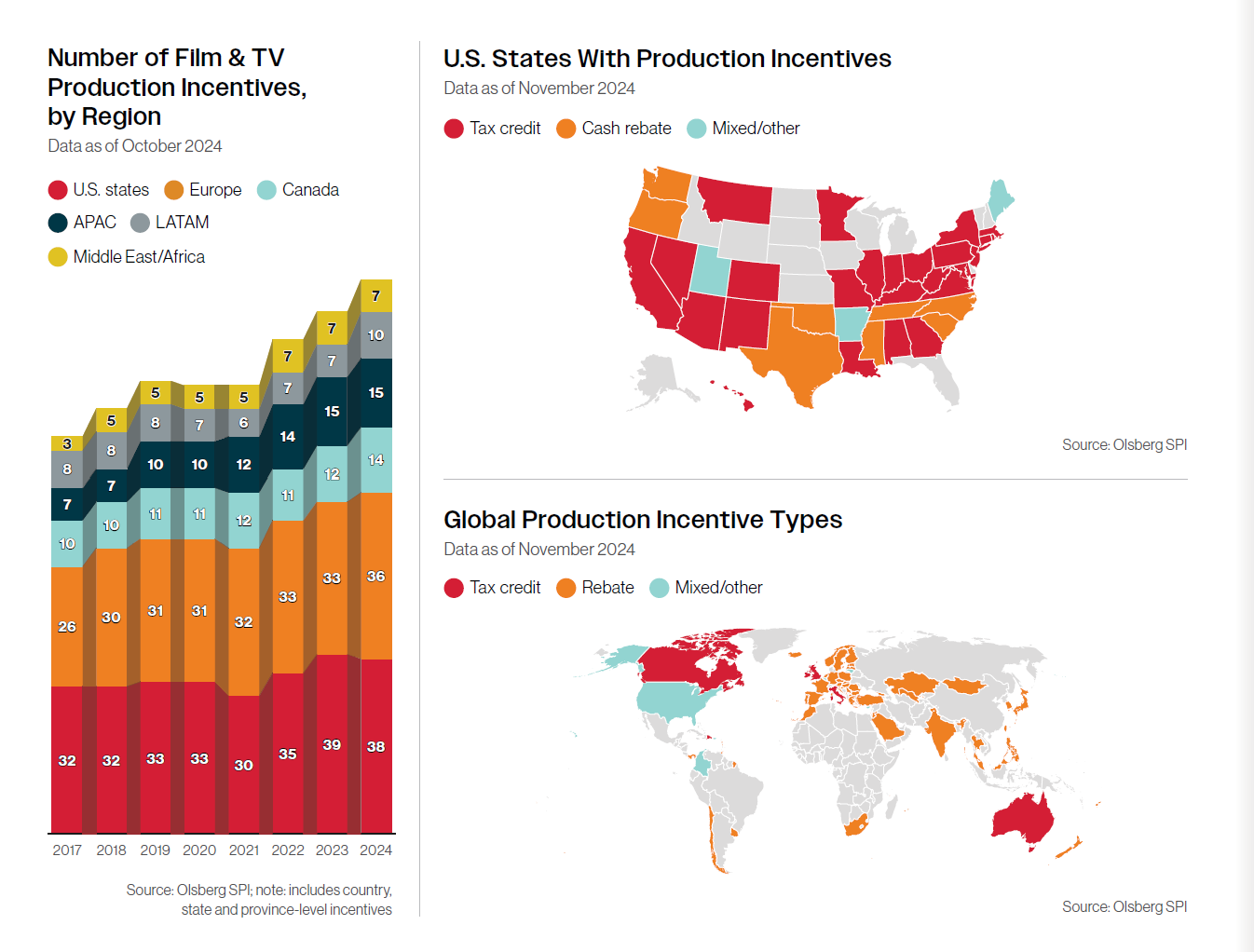
팬데믹과 스트리밍 시대 이후 미국의 할리우드 영화 제작 허브 지위는 흔들리고 있다.
미국 내에서도 애틀란타 등 LA외 지역에서 다양한 유인책과 인센티브를 제공하면서 할리우드의 제작 물량을 뺏아 오기 위해 혈안이다. LA지역 영화와 TV제작 프로젝트는 매년 줄어들고 있다.
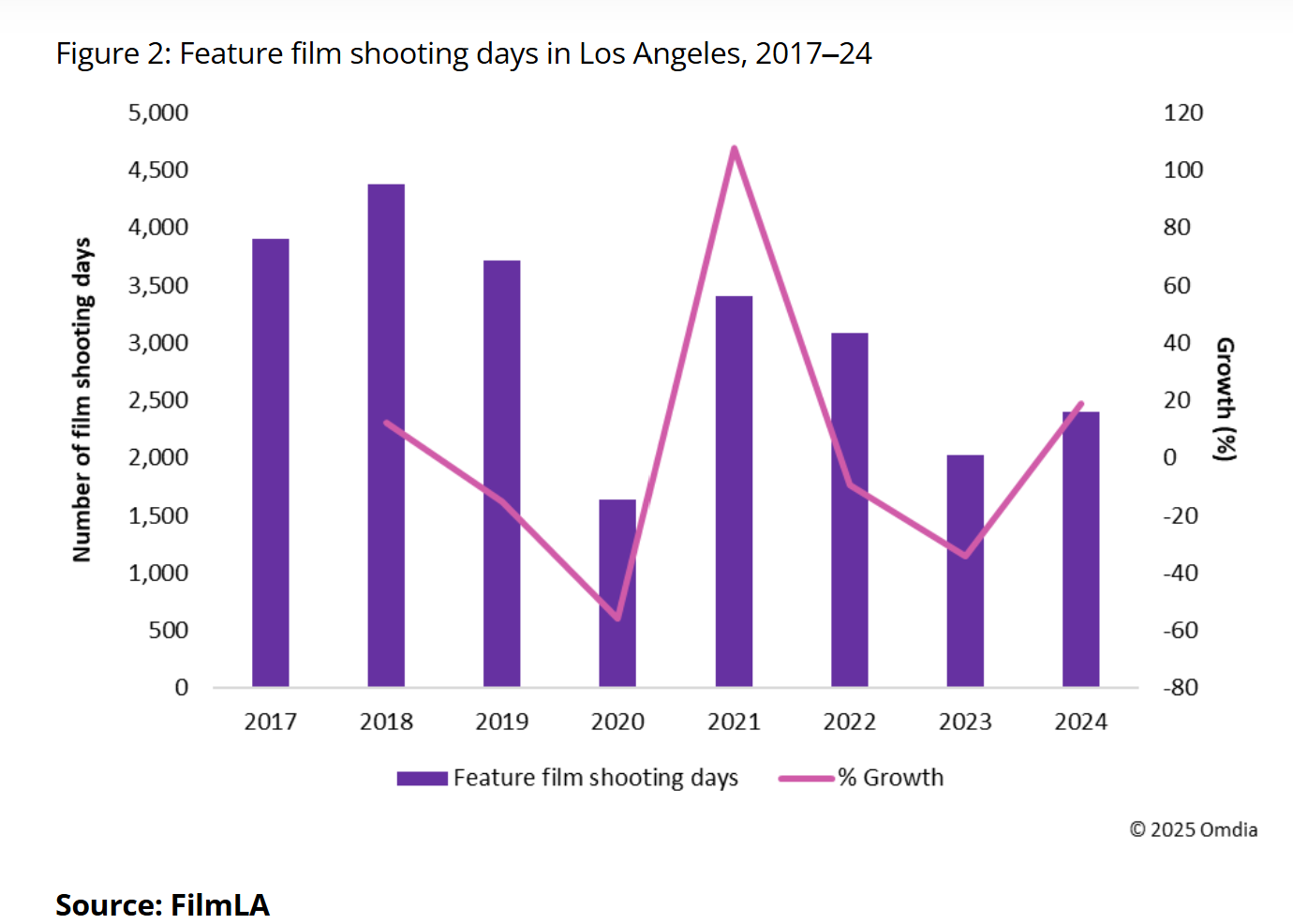
2024년 전 세계 영화·TV 제작 인센티브(세제 혜택, 현금 환급 등)가 사상 최다를 기록하며, 국가 간 영화 TV제작 유치 경쟁이 한층 치열해지고 있다. 영국 컨설팅사 Olsberg SPI가 집계한 최신 자료(2024년 10~11월 기준)에 따르면, 전 세계 제작 인센티브는 총 89개로, 2017년(66개) 대비 35% 이상 증가했다. 미국과 유럽이 인센티브 확대를 주도하고 있다.
또 100% 관세 부과는 미국 내에서 반발할 가능성이 높다. 캘리포니아 등 일부 주는 제작비 상승, 지역 경제·일자리 감소를 우려하고 있다. 실제로 최근 3년간 미국 영화·TV 제작은 26% 감소했고, 캘리포니아는 2023년 한 해에만 5.6%의 제작 감소를 겪었다
■관세의 실효성...엔터테크가 만든 '글로벌 분산형 협업'의 현실
트럼프 미국 대통령의 방침은 ‘해외에서 제작된 영화’에 일괄적으로 관세를 매기겠다는 것이지만 후반작업만 해외에서 진행된 작품 등 실제로 어디까지 관세를 적용할지 기준이 매우 모호하다. 미국 자본이 들어간 해외 합작, 넷플릭스·디즈니+ 등 스트리밍 오리지널은 물리적인 제작 현장으로 국적을 분리하기가 어렵다.
특히 영화는 물리적 상품이 아니라 지적재산권(IP)·서비스로 분류되는 경우가 많아, 관세 적용의 법적·행정적 근거도 불확실하다. 스트리밍 플랫폼을 통한 디지털 유통, 서버 위치, 저작권 소유 구조 등도 관세 집행을 복잡하게 만든다.
엔터테크와 글로벌 분산형 협업의 일상화
최근 영화·TV 제작 현장은 AI, 버추얼 프로덕션, 실시간 렌더링 등 엔터테크의 확산으로 국경을 넘는 분업·협업이 일상화됐다. 예를 들어, 한 편의 블록버스터가미국, 캐나다, 유럽, 아시아 등 여러 나라에서 로케이션·후반작업·VFX를 나누어 진행하고, 각국의 세제 혜택·현금환급 등 인센티브를 동시에 활용하는 것이 표준이 됐다.
버추얼 프로덕션과 생성 AI는 사전 시각화, 캐릭터 디자인, 배경 생성 등에서 글로벌 지역 실시간 협업을 가능하게 하고, 물리적 세트 없이 디지털 환경에서 제작 과정을 분산·동시 진행할 수 있게 한다. 이런 구조에서는 단일 국가의 물리적 경계로 관세를 적용하는 것이 기술적으로나 행정적으로 매우 어렵다.
결국 엔터테인먼트 테크가 구축한 글로벌 분산형 협업 구조에서는 관세 부과의 기준과 집행이 현실적으로 불가능에 가깝고, 디지털 유통·AI·가상제작 등 혁신 기술은 물리적 국경의 의미를 약화시키고 있다.
오히려 관세 정책은 미국 내 영화산업의 비용 부담 증가, 역관세·보복 조치, 글로벌 협업 약화 등 역효과를 초래할 가능성이 큽크다.
엔터테크의 시대
K엔터테크허브의 시각 "어디서 만드느냐가 아니라 어떻게 만드는 지가 핵심 경쟁력"
“AI와 버추얼 프로덕션 등 엔터테크가 주도하는 글로벌 분산 제작 시대에, 미국의 일방적 관세 부과는 실효성도, 지속가능성도 담보하기 어렵다. 지금은 관세가 아닌 오히려 혁신과 협업, 인센티브 경쟁이 미래 영화산업의 핵심 축이 되고 있다.”
■ 트럼프 100% 관세' 선언, 한국 영화·드라마에 미칠 파장
1. 미국 협업 프로젝트와 K-콘텐츠의 글로벌 전략, 대형 변동 가능성
최근 몇 년간 한국 영화·드라마 산업은 넷플릭스, 디즈니+, 애플TV+ 등 글로벌 스트리밍 플랫폼 및 할리우드 메이저 스튜디오와의 공동제작, 해외 로케이션, 후반 작업 등 다양한 방식의 협업을 활발히 추진해 왔다. K-콘텐츠의 글로벌 흥행 성공에 힘입어 미국 자본과의 합작이 가속화되는 추세였으나, 트럼프 대통령이 '해외 제작 영화에 100% 관세' 부과 방침을 공식 선언하면서, 이 구조에 근본적인 변화가 예상된다.
공동제작 프로젝트: 한국 스태프와 기업이 미국 자본과 협력해 해외 로케이션, 후반 작업 등 일부 공정을 미국 외 지역에서 진행할 경우, 어느 단계에서 관세가 적용될지 불확실성이 커졌다. 트럼프의 발표문에서도 '외국에서 제작된 영화'의 정의가 모호해, 미국 스튜디오가 해외에서 촬영하거나, 한국과 공동제작한 작품까지도 관세 부과 대상이 될 수 있다.
수출 및 배급: 한국 제작사가 미국 시장에 합작 영화나 드라마를 수출할 때, 관세 부담이 크게 늘어날 수 있습니다. 이는 투자 회수와 수익성에 직접적인 타격을 줄 수 있습니다.
보복 관세 위험: 미국의 고율 관세에 대응해, 중국 등 주요 시장이 미국 영화에 보복 관세를 부과하거나, 한국산 콘텐츠에도 역(逆)관세를 적용할 가능성이 있다. 실제로 미중 무역전쟁 당시 중국은 할리우드 영화 수입 쿼터를 줄이고, 자국 영화 비중을 높였다.
2. 관세 리스크 분담과 협상 구조의 변화
할리우드와의 합작이 늘어날수록, 관세 리스크를 어떻게 분담할지가 중요한 이슈로 부상한다.
업계 관계자들은 "현지 스튜디오 및 플랫폼과의 협상 단계에서 관세로 인한 추가 비용 부담 주체를 명확히 계약에 반영해야 한다"고 강조한다. 한국 정부, 영화진흥위원회, 무역협회 등도 법적·제도적 대응, 해외 문화교류 전략 수정 등 다각적 대비책 마련이 필요하다는 목소리가 커지고 있다.
3. 협력 다변화와 '탈(脫)미국' 전략 가속
이번 사태를 계기로, 한국 제작사들은 유럽, 아시아, 중동 등 미국 이외의 시장과의 협업을 강화하고, 프로젝트의 지역 분산을 적극 모색할 가능성이 높다. 이미 프랑스, 독일, 영국 등 유럽과의 공동제작, 동남아시아 로케이션 활용 등 '탈미국' 전략이 일부 현실화되고 있다. 글로벌 무역 마찰이 심화될수록, 콘텐츠 투자와 제작의 지리적 다변화가 더욱 가속화될 전망이다.
4. 단기 충격 vs. 장기 파급
트럼프의 관세 방침이 실제로 발효될지는 아직 불투명합니다. 미국 내에서도 위헌 논란과 의회의 승인, 무역 당국의 세부 지침 등 여러 절차적 장벽이 남아 있다. 하지만, 법적·정책적 리스크가 현실화될 수 있다는 점에서, 한국 제작사들은 투자, 배급, 제작 협력 모델을 다각도로 재검토할 필요가 있다.
5. 글로벌 영화산업의 불확실성 확대와 한국의 대응
트럼프의 이번 선언은 이미 북미, 영국, 캐나다 등 해외 로케이션이 잦은 주요 지역에 강한 충격파를 던졌다.
실제 관세 부과까지는 시간이 걸릴 수 있지만, 할리우드를 포함한 전 세계 영화산업이 무역 마찰, 비용 부담, 협력 구조 변화 등 새로운 불확실성에 직면했다.
한국 콘텐츠 업계 역시 미국 수출·공동제작 중심 전략을 재점검하고, 관세 리스크를 최소화하는 투자·배급 정책, 협력 시장의 다변화, 계약 구조의 유연화 등 전략적 대응이 필수다.
전문가들은 "영화산업은 국가 간 협업을 통해 성장해 온 대표적 글로벌 산업"이라며, "고율 관세 등 보호무역 조치는 결국 세계 시장 축소와 문화 다양성 위축으로 이어질 수 있다"고 경고하고 있다.
Korea’s Dilemma: Reassessing Co-Productions
Trump’s tariff announcement also puts South Korean studios on high alert. Having surged in global prominence through tie-ups with Netflix, Disney+, and Hollywood majors, K-content relies increasingly on American co-financing and distribution. Should Washington define hybrid projects as “foreign-made,” production teams might find themselves facing steep additional costs and endless contract renegotiations.
Investment & Distribution Risks: Extra tariffs could eat into profits for Korean-produced films headed for U.S. theatrical releases or streaming platforms, undermining their business model.
Legal Ambiguity: Joint ventures with American studios could still be labeled “foreign” if principal photography happens outside the U.S., leaving producers uncertain about tariff liabilities.
Potential Retaliation: As the film sector is a ripe target in international trade disputes, an American tariff might provoke other regions to respond in kind, complicating global market access even further.
■격변기, ‘엔터테크(Entertainment Tech)’ 열쇠 될까
트럼프 대통령의 “해외에서 제작된 모든 영화에 대해 100% 관세를 부과하겠다”는 선언은, 북미·영국·캐나다 등 대규모 로케이션 촬영에 의존해온 주요 제작지에 이미 강한 파장을 던지고 있다. 실제 관세 부과까지는 법적·정치적 절차가 남아 있지만, 이로 인해 무역 마찰과 제작비 부담이 가중될 경우, 글로벌 영화산업의 패러다임 자체가 크게 흔들릴 수 있다는 점은 분명하다.
한국 영화·드라마 업계 역시 미국 수출·공동제작을 통해 성장해 온 전략을 재검토하고, 관세 리스크를 최소화하는 방안을 적극 모색해야 한다. 전문가들은 “국가 간 협업으로 발전해 온 영화산업 특성상, 고율 관세 같은 보호무역 조치는 결국 세계 시장 위축과 문화 교류의 단절로 이어질 수 있다”고 경고한다.
그렇다고 마냥 수동적으로 대응할 수만은 없다. 최근 업계에서는 불확실성을 극복하고 보다 유연한 제작 생태계를 구축하기 위해 “엔터테크(Entertainment Tech)” 활용이 필수적이라는 목소리가 커지고 있다. 다음과 같은 기술·시스템을 적극 도입함으로써, 해외 로케이션에 대한 의존도를 줄이고, 무역 갈등에 따른 위험을 분산할 수 있다는 것이다.
<버추얼 프로덕션(가상 제작) & LED 볼륨(Stage)>
실시간 렌더링이 가능한 대형 LED 월(Volume)을 활용해, 실제 해외 로케이션 대신 스튜디오 내에서 현장감을 재현할 수 있다.물리적 이동이 줄어들어 물류·인력 비용 절감은 물론, 관세나 국경 통과에 대한 부담도 낮출 수 있다.
2019년 이후 글로벌 가상 프로덕션 스테이지는 팬데믹, 기술 혁신, 콘텐츠 수요 증가에 힘입어 100배 이상 폭발적으로 늘었다. 이 추세는 2025년에도 계속되고 있으며, 시장 규모와 기술 경쟁력 모두에서 가상 프로덕션이 영화·TV 산업의 핵심 인프라로 자리잡고 있다. 2025년 글로벌 버추얼 프로덕션 시장 규모는 약 24억 9,000만~33억 2,000만 달러로 추정되며, 2032~2034년까지 연평균 16.9~18.4%의 고성장을 기록해 100억~130억 달러 이상으로 확대될 전망이다.
<AI 기반 워크플로 & 데이터 분석>
프리비주얼라이제이션, 각본 분석, 촬영 일정 최적화 등 제작 전 과정에 AI를 도입하면, 프로젝트를 더 빠르고 유연하게 진행할 수 있다.
관객 분석, 배급 성과 등 데이터 기반 의사결정이 가능해져, 시장별 맞춤 전략을 수립함으로써 투자 리스크를 줄일 수 있다.
<클라우드 협업 시스템>
전 세계 스태프와 제작자가 클라우드 플랫폼에서 하나의 프로젝트를 동시다발적으로 수행할 수 있어, 물리적 국경을 초월한 제작이 가능하다.
이는 불시에 생길 수 있는 무역 규제나 해외 이동 제약 상황에도 발빠르게 대응할 수 있는 모듈형 생산 체계로 이어진다.
<하이브리드 스튜디오 인프라>
전통 사운드스테이지(촬영 스테이지)에 고성능 데이터 센터, 리얼타임 렌더링 스위트 등을 결합한 ‘엔터테크 복합 스튜디오’가 등장하고 있다.물리적 로케이션 촬영 없이도 다양한 시나리오를 재현할 수 있어, 관세나 국가 간 규제 영향을 최소화할 수 있다.
이처럼 엔터테크를 기반으로 한 제작 방식으로 전환하면, 한국 콘텐츠 업계뿐 아니라 전 세계적으로 로케이션 중심의 리스크를 줄이고 기술적 자립도를 높일 수 있다. 관세나 무역 분쟁 같은 외부 요인에 좌우되지 않고, 더욱 탄력적으로 프로젝트를 추진할 수 있게 되는 것이다.
결국, 이번 트럼프 대통령의 관세 선언이 실제 정책으로 이어지든, 정치적 퍼포먼스에 그치든 간에, 영화산업의 ‘글로벌 협업 모델’이 큰 도전을 맞이한 것은 분명하다. 이제는 단순히 장벽에 대응하는 수준을 넘어, 새로운 제작·투자·배급 생태계를 모색해야 할 때다.
“영화가 국경을 넘나드는 창의적 산물이라면, 엔터테크는 그 국경을 더 유연하게 만드는 기술적 ‘날개’”라는 평가가 무색하지 않음을 이번 사태가 보여주고 있다.
Enter Entertainment Tech: A Possible Game-Changer
For those looking to counter rising political and economic uncertainty, entertainment tech stands out as a strategic solution. By minimizing reliance on physically crossing borders, next-gen tools can offer resilience against sudden policy shifts:
Virtual Production & LED Volumes
Real-time rendering and massive LED walls replicate on-location environments. Productions save on transportation and logistics while avoiding tariffs on location-based filming.
AI-Enhanced Workflows & Data Analytics
AI aids in previsualization, scheduling, script breakdowns, and audience targeting, streamlining decisions on where to shoot — or whether to shoot abroad at all.
Cloud-Based Collaboration
Teams across multiple countries can work simultaneously in a virtual pipeline, lessening the need to move equipment and staff internationally.
Hybrid Studio Infrastructures
Combining high-performance data centers with traditional soundstages, these facilities enable near-seamless “all-in-one” production. Large chunks of the filmmaking process remain under one physical roof, mitigating exposure to foreign taxes.
Such tech-forward approaches align with broader industry trends toward distributed work models, real-time VFX, and a reliance on digital workflows. In other words, entertainment tech can serve as insurance against mounting trade barriers, providing a more adaptable framework for modern filmmaking.
Conclusion: A Turbulent New Era for Global Filmmaking—Why “Entertainment Tech” Matters
President Trump’s declaration of a “100% tariff on foreign-made films” has already sent shockwaves through major production hubs such as North America, the U.K., and Canada—regions that depend heavily on big-budget location shoots. While there remains a long road before any concrete tariff could be legally enforced, the mere specter of rising trade tensions and higher production costs stands to redefine the global film landscape.
For South Korea’s film and television sector, which has thrived on co-productions and exports to the U.S., Trump’s announcement is a wake-up call. The industry must reassess its reliance on American distribution and financing, taking proactive steps to minimize tariff-related risks. Observers warn that film has always been a cross-border enterprise, and protectionist measures like heavy tariffs risk contracting the global market and stifling cultural exchange.
However, adapting to this new reality is not solely a matter of navigating trade complexities—it also calls for a technological evolution in film production. As experts note, the rise of “entertainment tech” could offer a strategic bulwark against economic and political uncertainties. By embracing cutting-edge innovations, studios can reduce their dependency on location-based shooting and achieve greater efficiency:
Virtual Production & LED Volume Stages
Real-time rendering and dynamic backdrops can replace certain on-location shoots, lowering international travel and logistics costs.
Large LED volumes and advanced game-engine technology allow crews to recreate overseas settings without leaving the studio.
AI-Driven Workflows & Data Analytics
Artificial intelligence can expedite previsualization, script breakdowns, and post-production, making creative processes more flexible and less geographically constrained.
Data analytics can guide strategic decisions on where and how to shoot, which markets to prioritize, and how to optimize distribution channels.
Cloud-Based Collaboration
By centralizing media assets and production files in the cloud, teams across the globe can work synchronously, minimizing the need for physical transit of equipment and personnel.
This also creates a more modular, resilient production pipeline, able to shift workflows quickly in response to sudden policy changes or financial burdens.
Hybrid Studio Environments
Facilities that blend traditional soundstages with cutting-edge technology (high-performance data centers, real-time rendering suites) can serve as “all-in-one” production ecosystems.
Such setups reduce the necessity of offshoring major production segments—potentially mitigating exposure to tariffs or border regulations.
By transitioning toward entertainment-tech solutions, Korean studios (and indeed, filmmakers worldwide) might buffer themselves from the volatility of international trade conflicts. Whether Trump’s plan turns out to be a headline-grabbing gesture or a genuine policy shift, the growing need for flexible, technology-driven production models is undeniable.
Ultimately, the film industry—long emblematic of global collaboration—now faces a period of heightened political and economic uncertainty. Industry players must adapt by pursuing new collaborative frameworks, investing in advanced production technologies, and developing contingency strategies for fluctuating trade environments. One thing is certain: as long as film sits at the intersection of national security, cultural identity, and economic policy, its future will remain turbulent—yet full of potential for those ready to innovate.


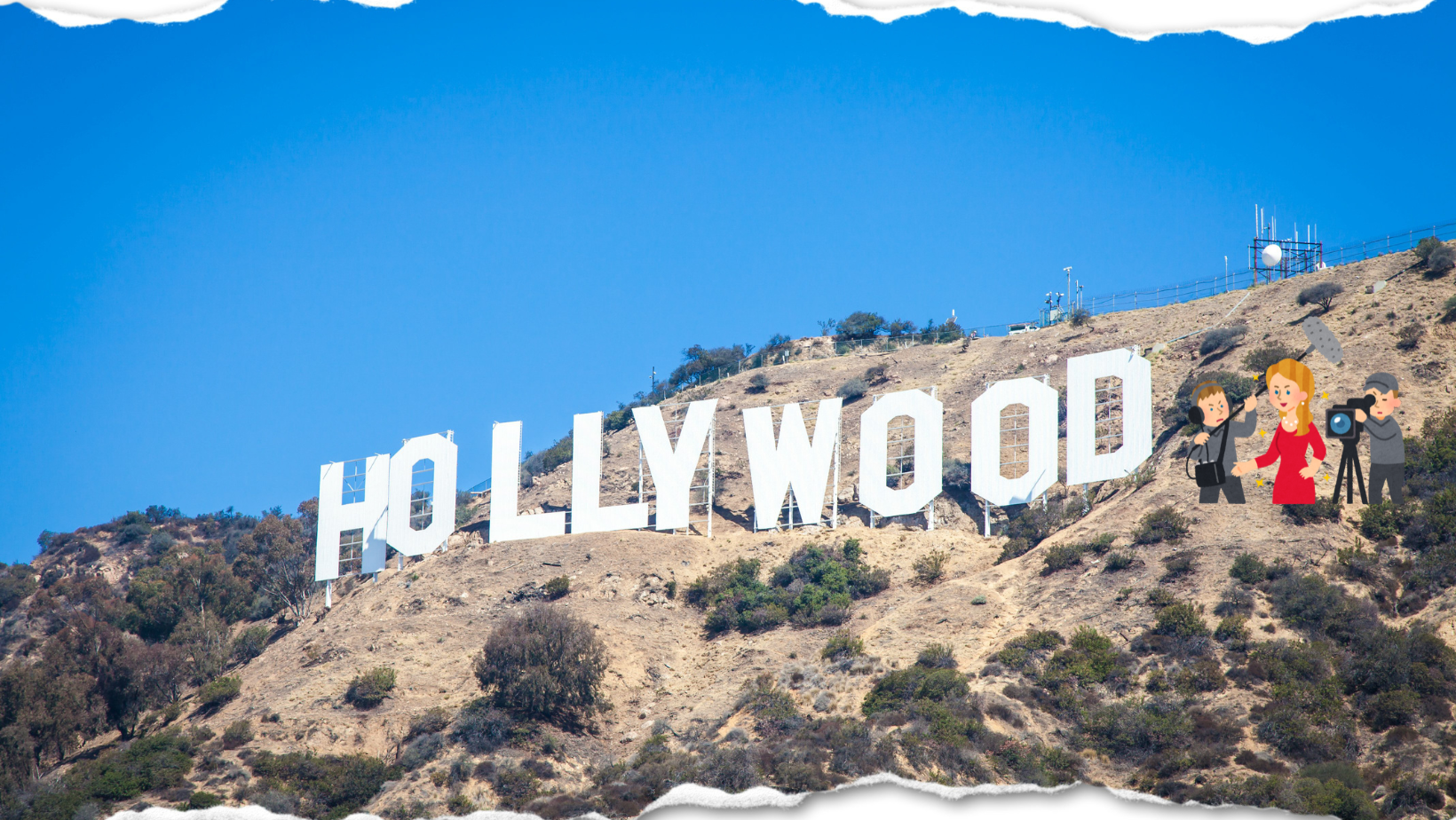

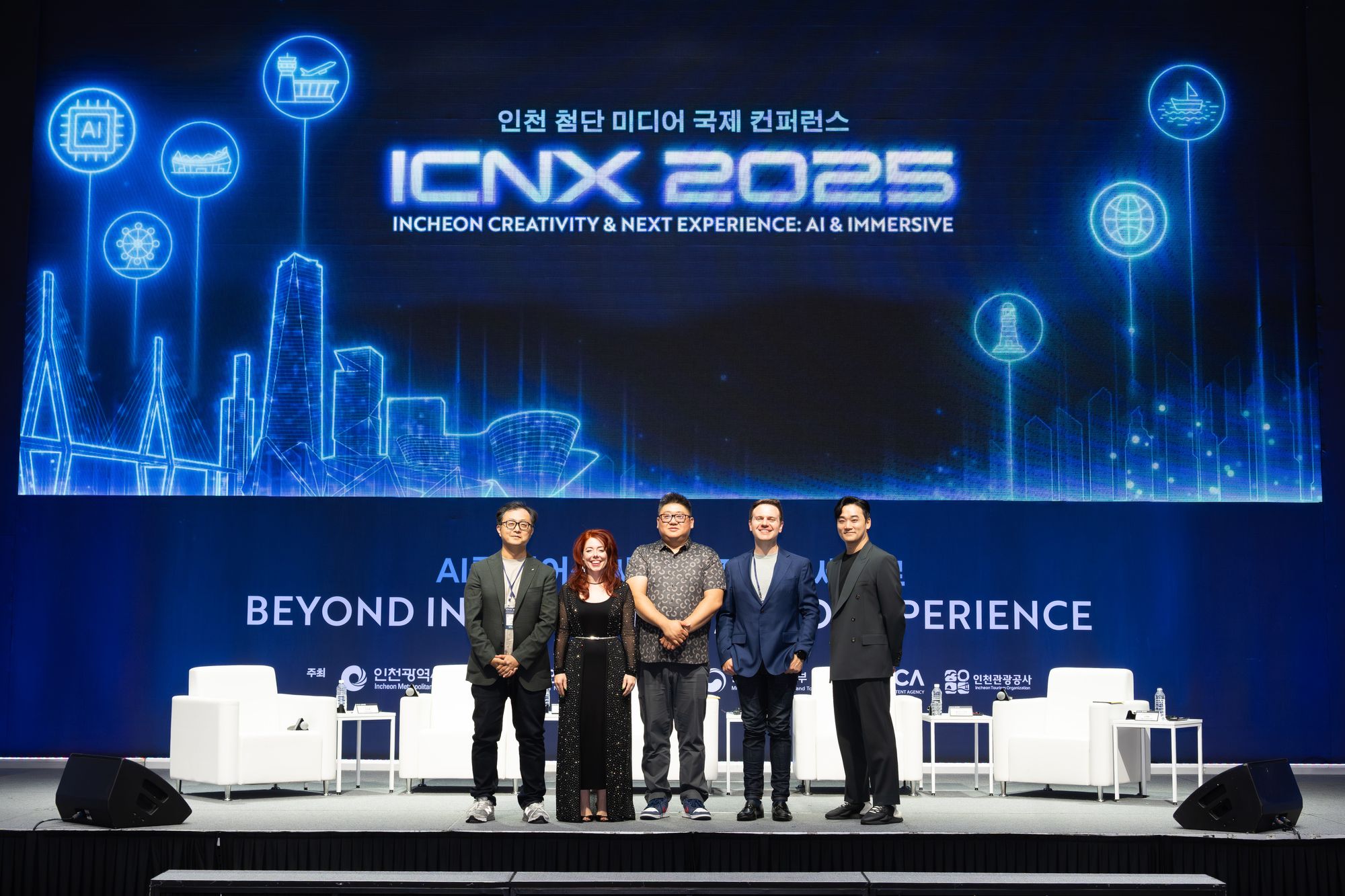

![[K콘텐츠와 K FAST]](https://cdn.media.bluedot.so/bluedot.kentertechhub/2025/11/zxwbgb_202511241038.jpg)
![[모집]1월 9일~14일 글로벌 AI 스템 캠프(자료집)](https://cdn.media.bluedot.so/bluedot.kentertechhub/2025/11/3kf0x5_202511031830.png)
![[MIPCOM2025]글로벌 엔터테인먼트 트렌드](https://cdn.media.bluedot.so/bluedot.kentertechhub/2025/10/duxlsp_202510170000.png)
![[보고서]생성AI와 애니메이션](https://cdn.media.bluedot.so/bluedot.kentertechhub/2025/09/c49fxu_202509271057.png)


![[보도자료]Kocowa, 유럽 진출 1년 성과](https://cdn.media.bluedot.so/bluedot.kentertechhub/2025/07/d4i5qa_202507142153.png)


